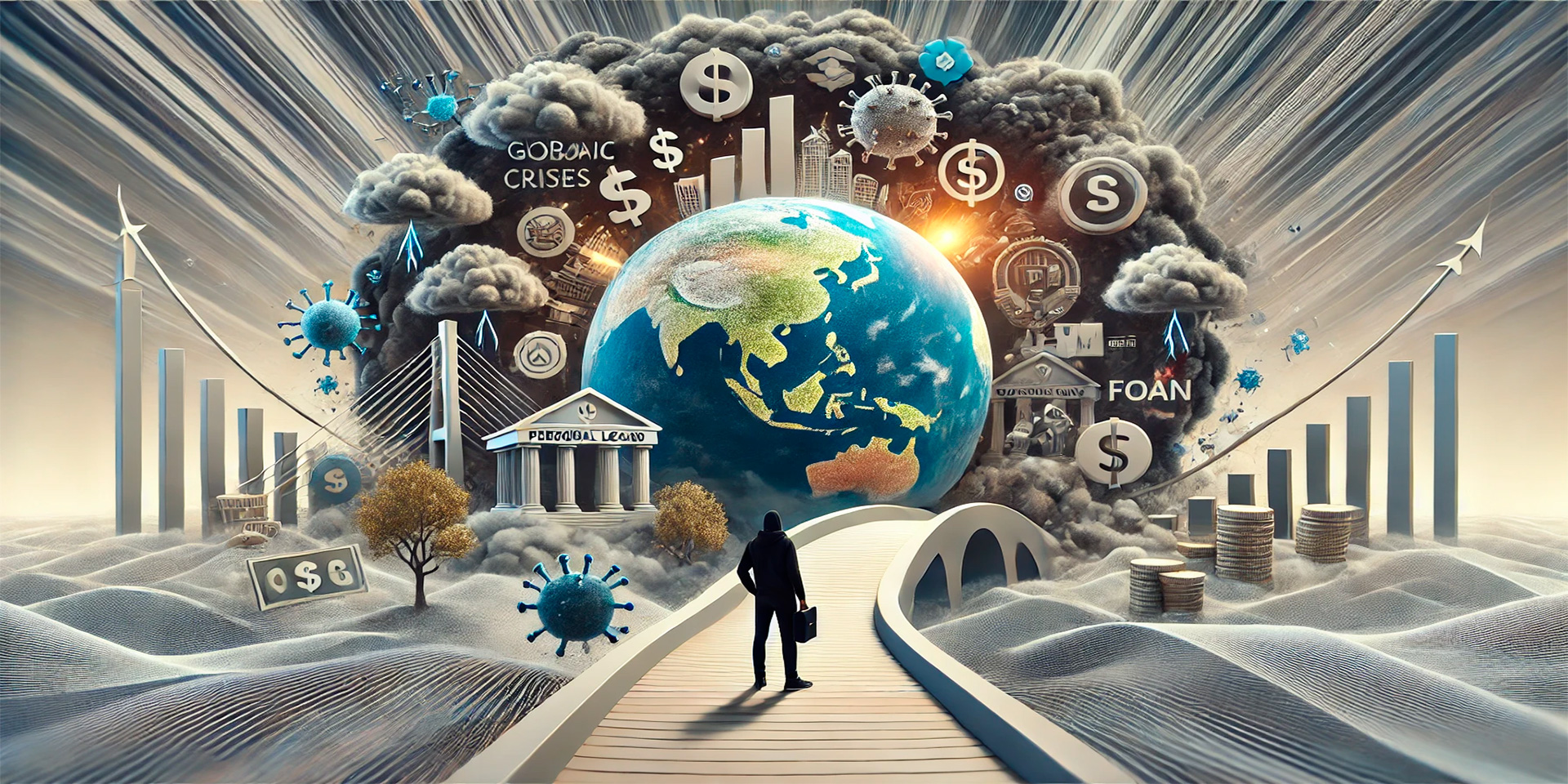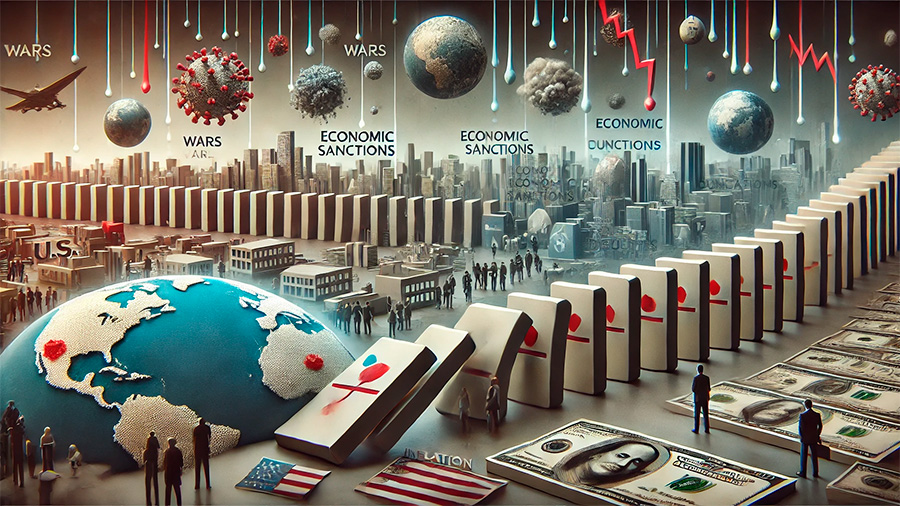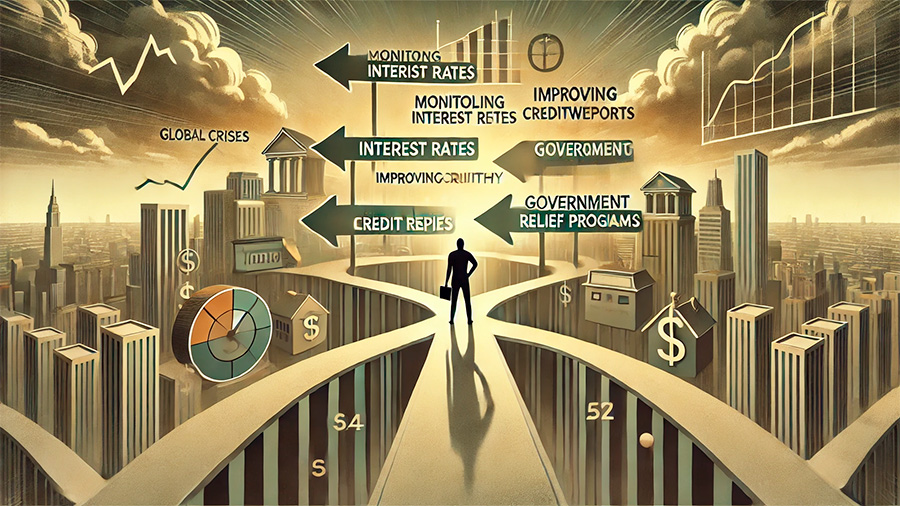
Global Tensions and Personal Loans: What Borrowers Need to Know
Global crises, whether they stem from economic downturns, pandemics, geopolitical tensions, or natural disasters, have far-reaching consequences. These events often trigger a chain reaction that affects industries, economies, and individuals on a broad scale. For everyday Americans, one of the most direct effects can be seen in the personal lending market. As global events create ripple effects in financial systems, U.S. lending practices shift, influencing the availability, cost, and terms of personal loans.
In this article, we explore how major global crises impact personal loans in the U.S., and what borrowers should be aware of during times of international uncertainty.
How Global Crises Affect the Personal Lending Market
Global crises disrupt economic stability and can influence several key factors that shape personal lending. From rising interest rates to tighter lending criteria, the effects of these crises are felt across lending institutions and borrowers alike.
1. Rising Interest Rates
One of the most immediate impacts of global crises on the personal loan market is the fluctuation of interest rates. Central banks, including the Federal Reserve in the U.S., often adjust interest rates in response to global economic pressures. For instance, during financial crises or periods of economic uncertainty, central banks may lower rates to stimulate borrowing and spending. However, during inflationary periods or currency devaluation caused by geopolitical tensions, rates may rise.
Impact on personal loans:
- Higher borrowing costs: As interest rates rise, personal loans become more expensive, making it more difficult for borrowers to secure affordable financing.
- Lower rates during crises: In some cases, global crises lead to central banks lowering interest rates to stimulate the economy, making personal loans more accessible and affordable in the short term.
2. Tighter Lending Standards
In the wake of global financial crises, lenders often respond by tightening lending standards. This is primarily done to mitigate the risk of defaults as economic instability leads to higher unemployment, wage reductions, and financial uncertainty for borrowers. Lenders may increase the credit score requirements, raise down payment expectations, or reduce the overall loan amounts they are willing to extend.
What this means for borrowers:
- Harder to qualify: Borrowers may find it more difficult to qualify for personal loans, particularly if they have lower credit scores or irregular income.
- Smaller loan amounts: Lenders may offer smaller loan amounts, especially to borrowers who present a higher perceived risk due to the broader economic conditions.
3. Reduced Loan Availability
During global crises, such as the COVID-19 pandemic or financial market crashes, banks and lenders may reduce the availability of personal loans altogether. With increased uncertainty in global markets, financial institutions often shift their focus toward conserving capital, reducing exposure to high-risk loans, and managing liquidity.
Consequences of reduced availability:
- Limited loan options: Borrowers may have fewer loan products to choose from, especially unsecured personal loans, which are seen as higher risk during times of crisis.
- Shift to secured loans: Lenders may push secured loan products, such as home equity loans or auto loans, that require collateral to reduce their lending risk.

The Domino Effect of Global Events on U.S. Lending
Global events, such as wars, economic sanctions, or international trade disputes, often trigger a domino effect that extends to personal lending. These events can cause disruptions in global supply chains, increase inflation, and devalue currencies, all of which influence the domestic lending landscape in the U.S.
1. Economic Sanctions and Geopolitical Tensions
When international conflicts or political tensions escalate, sanctions or trade restrictions are often imposed on countries, leading to global economic uncertainty. These disruptions can impact commodity prices, financial markets, and even consumer confidence. For the personal loan market, the uncertainty created by such events can result in banks and lenders becoming more cautious, leading to restricted lending practices.
Implications for U.S. borrowers:
- Volatility in interest rates: Economic sanctions and geopolitical risks can lead to fluctuating interest rates, affecting loan affordability for borrowers.
- Weaker consumer confidence: The uncertainty caused by global tensions can lead consumers to hesitate before taking on new debt, reducing demand for personal loans.
2. Inflation and Currency Devaluation
Global events, such as wars, pandemics, or financial crises, can lead to sharp increases in inflation or the devaluation of national currencies. For example, the COVID-19 pandemic disrupted global supply chains, resulting in higher production costs and driving up prices for goods and services. Inflation directly impacts the personal loan market by raising interest rates, making borrowing more expensive for consumers.
Impact of inflation on loans:
- Higher interest rates: As inflation rises, the Federal Reserve may increase interest rates to control it, making personal loans more expensive for borrowers.
- Reduced purchasing power: Borrowers may find that the value of their loan decreases in real terms, as inflation erodes the purchasing power of the loan amount.

How Borrowers Can Navigate Personal Loans During Global Crises
While global crises create uncertainty in the lending market, borrowers can still take proactive steps to secure affordable personal loans and manage debt effectively.
1. Monitor Interest Rate Trends
Understanding how global events affect interest rates is key to making informed borrowing decisions. If interest rates are expected to rise due to inflationary pressures or economic instability, borrowers may want to lock in lower rates on personal loans sooner rather than later. On the other hand, if central banks are likely to lower rates to stimulate borrowing, it might be worth waiting for more favorable lending conditions.
Tips for borrowers:
- Fixed-rate loans: Opt for fixed-rate personal loans to lock in a stable interest rate, protecting against future rate hikes.
- Consider refinancing: If interest rates drop during a crisis, refinancing an existing loan can help reduce the overall cost of borrowing.
2. Improve Creditworthiness
During global crises, lenders tend to tighten their criteria for loan approvals. To increase the chances of securing a loan, borrowers should focus on improving their credit scores and strengthening their financial profiles. This can include paying down existing debt, avoiding missed payments, and maintaining low credit utilization.
How to improve creditworthiness:
- Pay off outstanding balances: Reducing existing debt can improve your credit score and make you a more attractive candidate for loans.
- Maintain a stable income: Lenders are more likely to approve loans for borrowers with a consistent income, which demonstrates the ability to repay debt.
3. Explore Government Relief Programs
During times of global crisis, governments often introduce financial relief programs to help individuals cope with economic instability. These programs can provide temporary relief from loan payments, offer lower interest rates, or introduce other financial assistance for borrowers struggling to meet their obligations.
Examples of government relief:
- Payment deferrals: Some programs allow borrowers to defer loan payments without incurring penalties during times of financial hardship.
- Subsidized interest rates: Governments may offer loans or grants with reduced interest rates for individuals facing economic difficulties.
Conclusion
Global crises, whether economic, geopolitical, or environmental, have a profound impact on the personal lending market in the U.S. Borrowers must navigate shifting interest rates, tighter lending standards, and reduced loan availability as lenders react to the uncertainty created by these events. By staying informed about global economic trends, improving creditworthiness, and taking advantage of available relief programs, borrowers can better manage personal loans and protect their financial well-being during times of crisis.
Calendar
| M | T | W | T | F | S | S |
|---|---|---|---|---|---|---|
| 1 | 2 | 3 | 4 | 5 | 6 | |
| 7 | 8 | 9 | 10 | 11 | 12 | 13 |
| 14 | 15 | 16 | 17 | 18 | 19 | 20 |
| 21 | 22 | 23 | 24 | 25 | 26 | 27 |
| 28 | 29 | 30 | ||||
